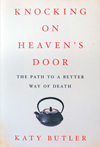JUST PUBLISHED

 Dan M. Brown ’94
Dan M. Brown ’94
Designing Together: The Collaboration and Conflict Management Handbook for Creative Professionals
New Riders, 2013
The increasing complexity of design projects, the greater reliance on remote team members, and the evolution of design techniques demands professionals who can cooperate effectively. This book encourages practicing designers to cultivate collaborative behaviors and deal constructively with inevitable difficult conversations. Brown covers 28 collaboration techniques, 46 conflict management techniques, 31 difficult situation diagnoses, and 17 designer personality traits. The volume should prove helpful for designers on large or small teams and those working in remote locations, in multidisciplinary groups, within an organization, or as outside consultants.
Knocking on Heaven’s Door: The Path to a Better Way of Death
Scribner, 2013
In her wrenching memoir, based on a New York Times Magazine story, Butler reveals how modern medicine, in its pursuit of maximum longevity, can often cause more suffering than aid. She recounts how her 79-year-old father suffers a debilitating stroke and how her mother devotes herself to caregiving. Soon Butler finds herself helping shepherd her parents through their final declines. Doctors outfit her father with a pacemaker to keep his heart active but cannot prevent his six-year slide into dementia, near-blindness, and misery. Butler seeks to understand why physicians refuse to disable the pacemaker, condemning her father to a prolonged and agonizing death. Her mother faces grave illness and refuses open-heart surgery, meeting death on her own terms. The author explores what happens when our terror of death collides with the technological imperatives of medicine.
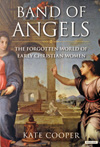 Kate Cooper ’82
Kate Cooper ’82
Band of Angels: The Forgotten World of Early Christian Women
The Overlook Press, 2013
In this new history of the early Christian movement, Cooper provides a vibrant narrative of the triumphs and hardships of the first mothers of the infant church. As far as recorded history is concerned, women in the ancient world lived almost invisibly in a man’s world. Piecing together their story from the few contemporary accounts that have survived required painstaking research, and Cooper offers a fresh perspective on the triumphs and hardships encountered by these early women. The book tells the intriguing story of how a new way of understanding relationships took root in the ancient world. As Cooper demonstrates, women from all walks of life—peasants, empresses, and independent businesswomen—played an invaluable role in Christianity’s growth to become a world religion, contributing to an emotional revolution.
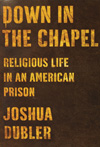 Jonathan Dubler ’97
Jonathan Dubler ’97
Down in the Chapel: Religious Life in an American Prison
Farrar, Straus and Giroux, 2013
Dubler’s compelling book tells the story of one week at Pennsylvania’s maximum security Graterford Prison. Part of the story revolves around Baraka, Al, Teddy, and Sayyid—four black men from South Philadelphia, two Christian and two Muslim—who are serving life sentences and work in Graterford’s chapel, a sanctuary for religious contemplation and place to debate the workings of God and man. Dubler observes how the inmates at Graterford—a variety of Muslims, Protestants, Catholics, and others—pass their time, care for themselves, and commune with their makers in prayer, study, and song. The writer strives to go beyond stereotypes of prisoners as con artists who fake their piety or pitiful wretches who hold on to faith because it is all they have left. The book might be described as both a prison procedural and a philosophical investigation, which explores the complexity of religious life in prison.
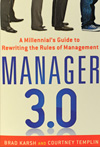 Brad Karsh ’87 and Courtney Templin
Brad Karsh ’87 and Courtney Templin
Manager 3.0: A Millennial’s Guide to Rewriting the Rules of Management
AMACOM, 2013
This first-ever management guide for millennials aims to help readers master crucial skills such as dealing with difficult people, delivering constructive feedback, and making tough decisions. While millennials are creative big thinkers, in order to find success as managers,they need to learn to bridge the gap between the hierarchical management style of senior executives and the casual, more collaborative approach of their peers. They also must gain an understanding of four generations in the workplace in order to bring out the best in a variety of workers. The authors include helpful interviews and examples of workplace situations from companies such as Zappos, Southwest Airlines, and Google.
 Richard M. Locke ’81
Richard M. Locke ’81
The Promise and Limits of Private Power: Promoting Labor Standards in a Global Economy
Cambridge University Press, 2013
Locke examines and evaluates various private initiatives to enforce fair labor standards within global supply chains. He draws upon unique data—including internal audit reports, and access to more than 120 supply chain factories and 700 interviews in 14 countries—from several major global brands, including Nike, HP, and the International Labor Organization’s Factory Improvement Programme in Vietnam. The book discusses both the promise and the limitations of different approaches to actually improve working conditions, wages, and working hours for the millions of workers employed in today’s global supply chains. Locke offers a careful, empirically grounded analysis of these programs and considers the mix of private and public regulation needed to address complex issues in a global economy.
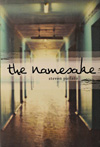 Steven Parlato MALS ’06
Steven Parlato MALS ’06
The Namesake
Merit Press, 2012
Evan Galloway is a talented artist and a good student at Saint Sebastian’s Catholic High School when his young father kills himself. No longer caring about his future, Evan becomes determined to excavate his father’s past to find reasons for the suicide. His grandmother gives him access to a locked trunk that belonged to his father, and he soon delves for answers in his parent’s paintings, tapes, journal entries, and poems. He also contacts his father’s former teachers and employers to help understand who his father really was and why even the love for his son wasn’t enough to save him.
 David M. Rabban ’71
David M. Rabban ’71
Law’s History: American Legal Thought and the Transatlantic Turn to History
Cambridge University Press, 2012
This study concentrates on the central role of history in late-19th-century American legal thought. In the decades following the Civil War, the founding generation of professional legal scholars in the United States drew from the evolutionary social thought that pervaded Western intellectual life on both sides of the Atlantic. Their historical analysis of law as an inductive science rejected deductive theories and supported moderate legal reform, conclusions that challenge conventional accounts of legal formalism. The book is unprecedented in its coverage and its illuminating conclusions about major American legal thinkers from the Civil War to the present. It considers transatlantic intellectual history, legal history, the history of legal thought, historiography, jurisprudence, constitutional theory, and the history of higher education.
 Rebecca Snedeker ’95 and Rebecca Solnit
Rebecca Snedeker ’95 and Rebecca Solnit
Unfathomable City: A New Orleans Atlas
University of California Press, 2013
This complex reinvention of the traditional atlas focuses on the multifaceted nature of New Orleans, which has long been a place hard to pin down and define despite its being a major tourist destination. More than 20 essays bring together insightful contributions from the co-authors and geographers, scholars of sugar and bananas, remarkable musicians, prison activists, environmentalists, Arab and Native residents, and local experts. These various lively voices plumb the depths of this pivotal scene of American history and culture that has been most recently the site of monumental disasters such as Hurricane Katrina and the BP oil spill. The book contains 22 innovative full-color, two-page maps, designed with precision and specificity to explore and change perspectives of the Mississippi, the Caribbean, Mardi Gras, jazz, soils and trees, generational roots, and other subjects.
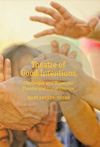 Dani Snyder-Young ’99
Dani Snyder-Young ’99
Theatre of Good Intentions: Challenges and Hopes for Theatre and Social Change
Palgrave Macmillan, 2013
This succinct study examines what theater can and cannot do in attempts to create social change. It critiques theater’s limitations in the creation of social change in order to engage in a productive discussion of the medium’s strengths and weaknesses, as well as theater artists’ opportunities to make a difference in an unjust world. Snyder-Young focuses on theater’s impact on both participants and spectators; she considers a wide range of contemporary applied and political theater case studies and examines some of the most common theater forms related to achieving social change, including Theatre of the Oppressed, professional political theater, community-based theater, prison theater, and classroom drama. The book encourages artists and students to think strategically about the limitations and opportunities of theater as a medium of social change.
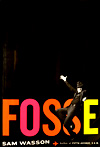 Sam Wasson ‘03
Sam Wasson ‘03
Fosse
Houghton Mifflin Harcourt, 2013
In this authoritative biography of the renowned dancer, choreographer, screenwriter, and director Bob Fosse, Wasson reveals the man behind the swaggering sex appeal by exploring Fosse’s reinventions of himself over a career that would result in his work on The Pajama Game, Pippin, Sweet Charity, the film Cabaret, All That Jazz, and the original Broadway production of Chicago. The only person ever to win Oscar, Emmy, and Tony awards in the same year, Fosse was a masterful artist who forever marked Broadway and Hollywood with his iconic style that would influence generations of performing artists. Wasson researched a wealth of unpublished material and hundreds of sources including friends, enemies, lovers, and collaborators, many of whom have never spoken publicly about Fosse before. He touches not only on Fosse’s prodigious professional life but also on his close and conflicted relationships with Liza Minnelli, Jessica Lange, Dustin Hoffman, and others. Wasson captures a man who was never satisfied with his achievements and reveals the deep wounds that encouraged Fosse’s insatiable appetites for spotlights, women, and life itself.
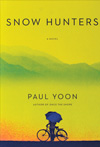 Paul Yoon ’02
Paul Yoon ’02
Snow Hunters
Simon and Schuster, 2013
Yoon’s 200-page novel traces the remarkable journey of Yohan, who leaves his country at the end of the Korean War, departing from friends and family to begin his life again in a quiet port town on the coast of Brazil. He soon suffers from symptoms of post-traumatic stress disorder. In Brazil, four people slip in and out of Yohan’s life: Kiyoshi, the Japanese tailor for whom he works; Peixe, the groundskeeper at the town church; and two vagrant children named Santi and Bia. In order to truly connect with others, he must confront traumas from his past. Yoon’s subtle novel doesn’t hesitate to deal with moments of kindness and tenderness amid difficult situations. In her review of the book in The New York Times, Tatjana Soli wrote: “Despite the bleak circumstances, the pleasures of “Snow Hunters” are many, and they begin with Yoon’s prose, at once lyrical and precise … .”

